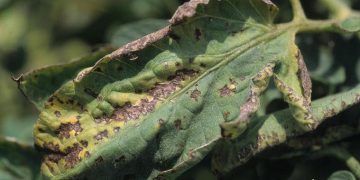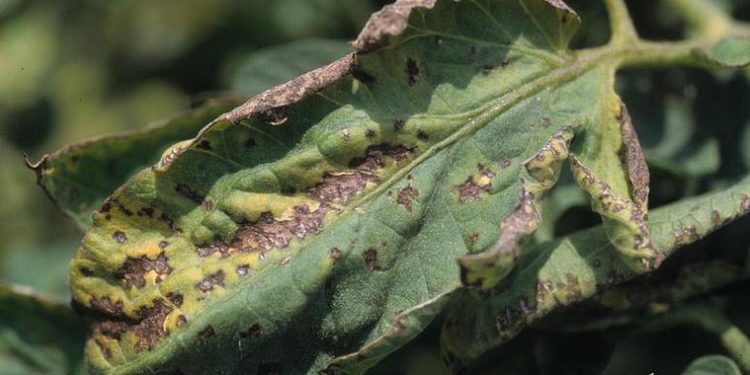#BacterialLeafSpot #PseudomonasSyringae #PlantDisease #CropProduction #PreventionAndControl
Bacterial leaf spot caused by Pseudomonas syringae pv. maculicola is a common disease that affects a wide range of plants, including vegetables, fruits, and ornamentals. The disease is characterized by the formation of water-soaked lesions on the leaves, which eventually turn brown and necrotic. In severe cases, the lesions can merge, causing defoliation and yield loss.
The development of bacterial leaf spot is favored by high humidity and temperatures between 20-30°C. The bacterium can survive in plant debris and infected seeds, and it can also be transmitted through contaminated tools, water, and insects.
Preventing the disease is key to controlling its consequences. The use of disease-free seeds, crop rotation, and avoiding overhead irrigation can help reduce the risk of infection. Copper-based fungicides can be applied preventively or curatively to protect plants from the bacterium. However, it is important to note that the excessive use of copper can have negative environmental consequences.
Early detection and removal of infected plants can also help prevent the spread of the disease. Diseased plants and plant debris should be removed and destroyed, and tools should be disinfected between uses.
Bacterial leaf spot caused by Pseudomonas syringae pv. maculicola is a significant threat to plant health and crop production. It is important for growers to understand the development of the disease and take preventive measures to reduce its impact.
Bacterial Leaf Spot, Pseudomonas Syringae, Plant Disease, Crop Production, Prevention And Control































